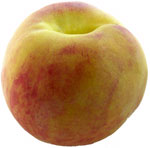Does a Mature Hairline Have Vellus Hairs?
Hello Dr. Rassman! I’ve found your blog to be extremely helpful and I’d like to ask you a question:
I’m 19 years old, and I’ve noticed thinning at the corners of the hairline, with thinner, shorter hairs, extending (as far as I can tell with close inspection – no microscope available yet unfortunately) about 1.3″ above the highest crease of the wrinkles at the corners, and it doesn’t seem to go any further than that (the hair also feels thinner at the corners) and the middle of the hairline has settled two thirds of an inch above the highest crease without thinning behind it.
I’ve come to understand from various blog posts that there are more smaller (or vellus) hairs at the hairline than at any other spot on the head, which leads me to my question: If developing a maturing hairline means the hairline moves back an inch or so, does the mature hairline position have the vellus hair common in hairlines before/during the maturation, or do some of the hairs in the mature hairline become vellus hairs during the maturation process?
I hope you find the time to answer this question, with kind regards from Israel.
 Vellus hairs are short, fine, light colored, often barely noticed hairs, which develop on most of the human body… and on the scalp they are part of the follicular unit. Some people might call it peach fuzz, and these hairs are not only on your frontal or maturing hairline, but they’re also found almost everywhere on your body — except lips, backs of ears, palms of hands, soles of feet, certain external genital areas, navel, and scar tissue.
Vellus hairs are short, fine, light colored, often barely noticed hairs, which develop on most of the human body… and on the scalp they are part of the follicular unit. Some people might call it peach fuzz, and these hairs are not only on your frontal or maturing hairline, but they’re also found almost everywhere on your body — except lips, backs of ears, palms of hands, soles of feet, certain external genital areas, navel, and scar tissue.
The leading edge of any hairline has hairs that are often thinner than the hairs further back. That is why a doctor must create a transition zone when he/she transplants the frontal hairline, or the transplanted hairline will look like unnatural. Obviously, nobody with a hair transplant wants the world to be able to tell their hairline was created by surgery. As you are only 19 years old, determining your future hair loss prospects may be a bit difficult just by trying to judge the frontal hairline and seeing fine vellus hairs. You probably need a miniaturization study, a physical exam, and a good family history to start any sort of guess work.

Reader Comments0
Share this entry
Leave a Comment
Want to join the discussion? Feel free to contribute! Note: We do not tolerate offensive language or personal attacks to other readers. Marketing links or commercial advertisements will be deleted.